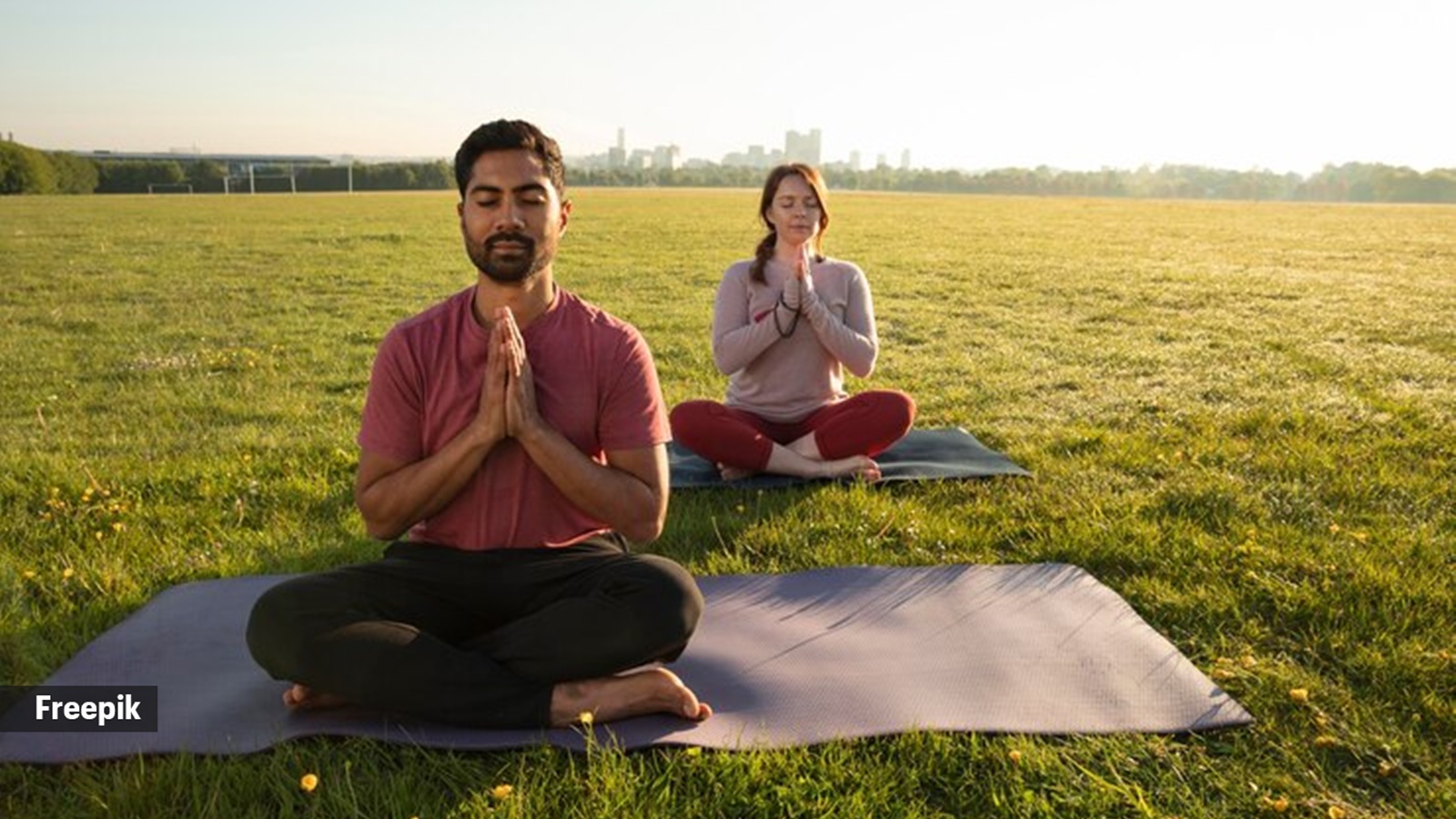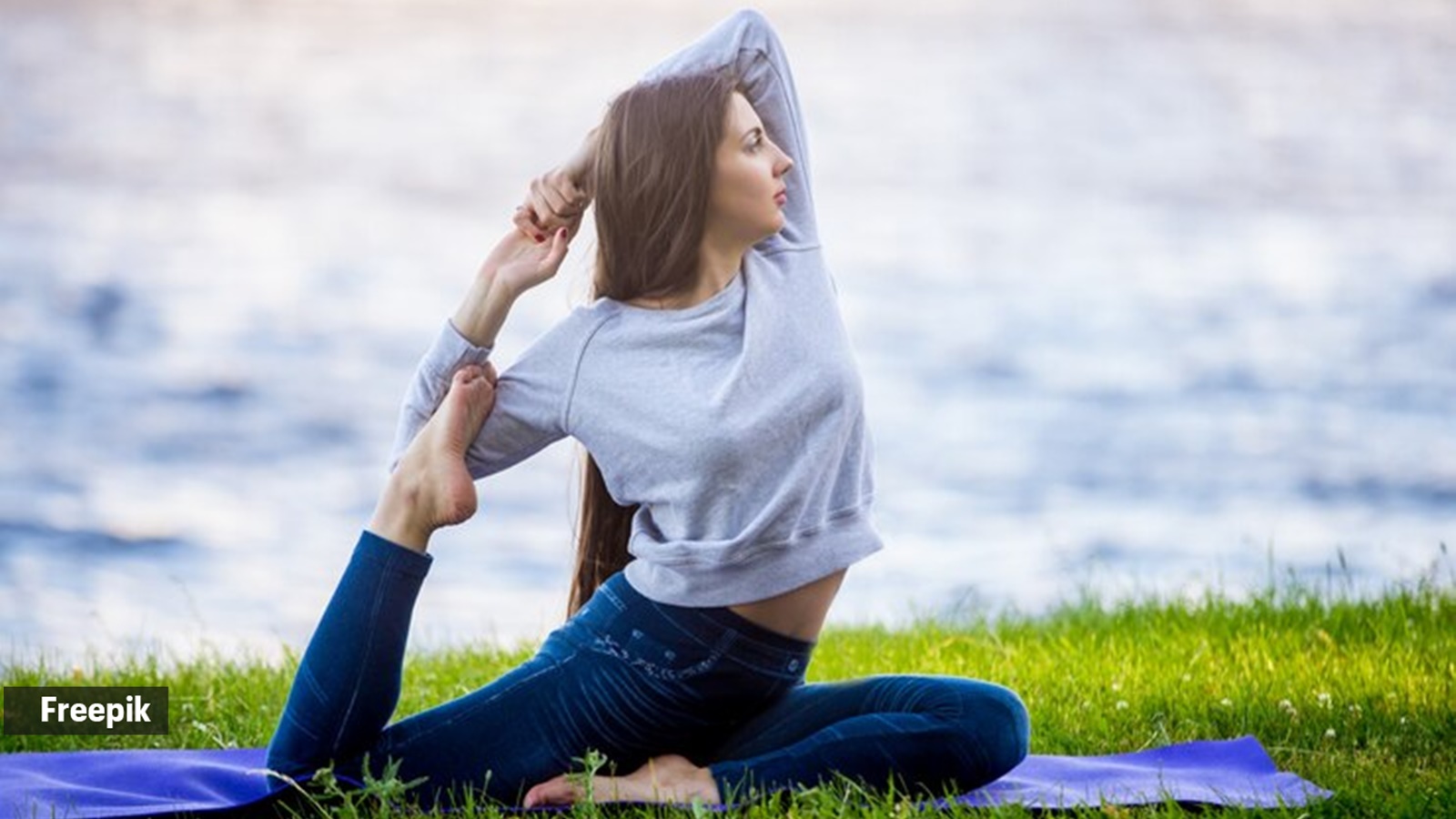Yoga, an ancient Indian practice that harmonises the body, mind, and soul, has gained immense popularity worldwide for its numerous physical, mental, and spiritual benefits.
Prashant Singh, certified yoga practitioner, Bengaluru, says, “Yoga is a fantastic way to get in shape, and take care of your body, mind, and spirit. It’s not just about fancy poses; it’s about feeling good in your skin and connecting with yourself.”
Acharya Lokesh of Agastya Yoga School says, “Today, in the 21st century, a spiritual heritage is being reclaimed of which yoga is very much a part. While yoga’s central theme remains the highest goal of the spiritual path, yogic practices give direct and tangible benefits to everyone regardless of their spiritual aims.”
These top 10 asanas as recommended by Acharya Lokesh can be easily integrated into even the busiest schedules, offering a comprehensive approach to fitness and a renewed sense of vitality and inner peace.
Top 10 asanas you should practice every day to be fit
Tadasana: This asana develops physical and mental balance. The entire spine is stretched and loosened, helping to clear up congestion of the spinal nerves at the point where they emerge from the spinal column. Tadasana stretches the rectus, abdominal muscles, and the intestine, and is useful during the first six months of pregnancy to keep the abdominal muscles and nerves toned. The best benefit of this asana is that it stimulates your nervous system.
Trikonasana: This asana affects the muscles on the sides of the trunk, waist, and hamstrings. It stimulates the nervous system and alleviates nervous depression. It improves digestion. It also strengthens the pelvic area and tones the reproductive organs. Regular practice can help reduce waistline fat. Regular practice of this asana can help control pitta dosha in the body.

Paschimottanasana: It stretches the hamstring muscles and increases flexibility in the hip joint. It also tones and massages the entire abdominal and pelvic region, including the liver, gallbladder, spleen, small and large intestine, pancreas, kidneys, adrenal glands, and the urogenital system. Paschimottanasana is used in the management of prolapse, menstrual disorder, sluggish liver, colitis, kidney complaints, eosinophilia and asthma. This is the only asana that can be practised to reduce a fever.
Ardhmatsyendrasana: This asana is good for lower back pain, makes the spine flexible, and stimulates pancreas to control diabetes. Ardhmatsyendrasana is practised by intermediate students. This asana tones the nerves of the spines, makes the back muscles supple, relieves lumbago and muscle spasms. It also reduces the tendency of the adjoining vertebrae to develop inflammatory problems and calcium deposits. This asana can stimulate the sun and the moon elements in our body.

Padmasana: Padmasana is helpful in achieving physical and mental stability and peace. This is not simply a belief, but a physiological fact. It has been shown that during such an asana, sensations emanating from the lower spinal column through a group of nadis enter the brain, calming the nervous system. The experience of mental peace subsequently enhances physical health.
Shalabhasana: This asana strengthens the lower back and pelvic organs, providing relief from backache, sciatica, and mild slipped disc (as long as the functioning of the liver, stomach, bowels, and other abdominal organs is not compromised). It also stimulates the appetite.
Bhujangasana: This asana expands the chest, which improves and deepens breathing. It can help provide relief from backache and keep the spine supple and healthy. A stiff spine interferes with all the nervous impulses sent from the spine to the brain and vice versa. By arching the spine, improving circulation in the back region, and toning the nerves, this asana can improve communication between the brain and the body. People suffering from a slipped disc or sciatica may also benefit from this pose, but care should be taken.
Vajrasana: Vajrasana is considered a higher practice in yoga. In this posture, the flow of prana shakti (life force) differs from other meditation asanas. In a cross-legged asana, the flow of prana shakti can continue from one foot into the body if the feet remain in contact. This also applies to Vajrasana. However, in Vajrasana, the vajra nadi is strongly influenced. The vajra nadi is an important pathway for energy flow and carries nervous impulses from the brain to the reproductive and urinary systems. Vajrasana is also believed to help control sexual energy and redirect it towards consciousness development.
Bhadrasana: Bhadrasana (Titliasana) is an excellent meditative asana. The pressure exerted on the vajra nadi in the anal region enhances digestive power. The practices of Ashwini and Vajroli mudras may even occur spontaneously during this pose. On a physical level, the practice of Bhadrasana controls and balances the flow of prana (life force energy) and directs it upwards. Pressure is also applied to the Muladhara, Swadhisthana, and Manipura chakras, which is why Bhadrasana is also an excellent method for calming the mind and reducing mental agitation.
Sarvangasana: In Sarvangasana (Shoulder Stand Pose), pressing the chest against the chin stimulates the thyroid gland. This asana generally balances the circulatory, respiratory, digestive, reproductive, nervous, and endocrine systems. It also tranquillises the mind, relieves mental and emotional stress, and helps clear psychological disturbances, ultimately boosting the immune system. Its influence on the parathyroid glands may ensure normal bone development and regeneration.
Additionally, this pose tones the legs, abdominal and reproductive organs, and may aid in draining stagnant blood and abdominal fluids. Some believe it may even improve the function of the ears, eyes, and tonsils, but more research is needed to confirm this claim.
New to yoga? Here’s what Singh recommends you to do
Take it Easy: Start with the basics and gradually challenge yourself.
Listen: Your body will tell you what it needs. If something doesn’t feel right, back off a little.
Get Help: A yoga teacher can guide you through proper form and alignment.
Props are Your Friend: Use blocks or straps for support, especially when starting out.
Warm Up: Always ease into your practice with gentle stretches.
Stay Hydrated: Drink water before and after your practice.
“Hold each pose for a few breaths at first, then increase the time as you get stronger. Most importantly, enjoy yourself. Yoga is a journey, not a race,” he stresses.


